MaryAnn Bernal's Blog, page 204
January 15, 2015
History Trivia - Emperor Galba murdered
January 15
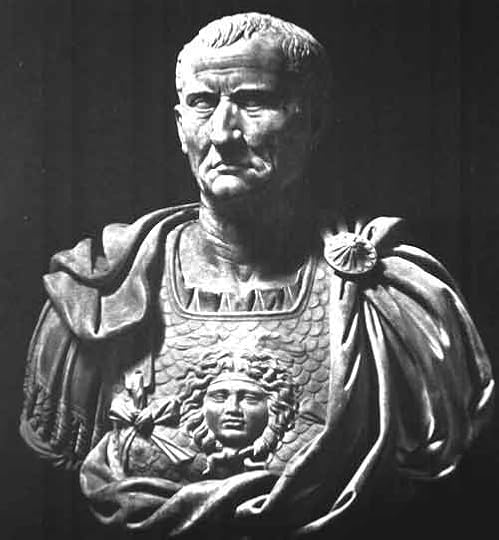
69 Emperor Galba was murdered in the streets of Rome. Otho (Marcus Salvius Otho Caesar Augustus) seized power and proclaimed himself Emperor of Rome, but ruled for only three months before he committed suicide.
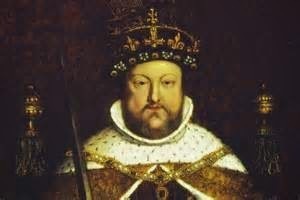
1535 Henry VIII declared himself head of English Church.
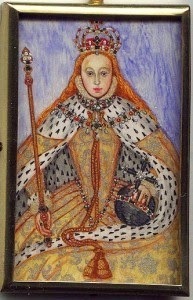
1559 Elizabeth I was crowned Queen of England in Westminster Abbey, London by Owen Oglethorpe, Bishop of Carlisle.

1759 British Museum opened in Montague House, London


69 Emperor Galba was murdered in the streets of Rome. Otho (Marcus Salvius Otho Caesar Augustus) seized power and proclaimed himself Emperor of Rome, but ruled for only three months before he committed suicide.

1535 Henry VIII declared himself head of English Church.

1559 Elizabeth I was crowned Queen of England in Westminster Abbey, London by Owen Oglethorpe, Bishop of Carlisle.

1759 British Museum opened in Montague House, London

Published on January 15, 2015 03:00
January 14, 2015
How to Recreate a Sloppy Ancient Greek Drinking Game
by Megan Gannon
Live Science

 A man plays kottabos in the artwork on this terracotta kylix, housed at the Metropolitan Museum of Art. The cup is attributed to the Kleophrades Painter and dates back to about 500 B.C.
A man plays kottabos in the artwork on this terracotta kylix, housed at the Metropolitan Museum of Art. The cup is attributed to the Kleophrades Painter and dates back to about 500 B.C.
Credit: Creative Commons, Marie-Lan Nguyen (2011)
NEW ORLEANS — More than 2,000 years before the invention of beer pong, the ancient Greeks had a game called kottabos to pass the time at their drinking parties.
At Greek symposia, elite men, young and old, reclined on cushioned couches that lined the walls of the andron, the men's quarters of a household. They had lively conversations and recited poetry. They were entertained by dancers, flute girls and courtesans. They got drunk on wine, and in the name of competition, they hurled their dregs at a target in the center of the room to win prizes like eggs, pastries and sexual favors. Slaves cleaned up the mess.
"Trying to describe this ancient Greek drinking game, kottabos, to my students was always a little bit difficult because we do have these illustrations of it, but they only show one part of the game — where individuals are about to flick some dregs at a target," said Heather Sharpe, an assistant professor of art history at West Chester University of Pennsylvania. [11 Interesting Facts About Hangovers]
"I thought it would be really great if we could actually try to do it ourselves," said Sharpe.
So, with a 3D-printed drinking cup, some diluted grape juice and a handful of willing students, Sharpe did just that. She found out that it wasn't impossible to get the hang of kottabos, but the game did require a skilled overhand toss. She presented her findings this past weekend (Jan. 8 to 11) here at the annual meeting of the Archaeological Institute of America.
Raise your glass
Ancient texts and works of art indicate that there were two ways to play kottabos. In one variation, the goal was to knock down a disc that was carefully balanced atop a tall metal stand in the middle of the room. In the other variation, there was no metal stand; rather, the goal was to sink small dishes floating in a larger bowl of water. In both versions, participants attempted to hit their target with the leftover wine at the bottom of their kylix, the ancient equivalent of a Solo cup.
The red-and-black kylixes had two looped handles and a shallow but wide body — a shape that perhaps was not the most practical for drinking but lent itself to playful decoration.
Big eyes were sometimes painted on the underside on kylixes so that the drinker would look like he was wearing a mask when he took a hefty sip. And the relatively flat, circular inside of the cup, called the tondo, often carried droll or dirty pictures that would be slowly revealed as the wine disappeared. The tondo of one kylix at the Museum of Fine Arts in Boston bears the image of a man wiping his bottom. Another drinking cup at the same museum shows a man penetrating a woman from behind with the caption "Hold still."
Other paintings on kylixes were quite self-referential, with scenes of revelers playing kottabos. Based on those ancient illustrations, Sharpe had assumed that to play the game, you would swirl the dregs in the kylix and flick them at the target, almost as if you were doing a forehand throw with a Frisbee. But her experiment showed that that was not the most winning technique. [Coolest Archaeological Discoveries of 2014]
Re-enacting a symposium
Sharpe collaborated with Andrew Snyder, a ceramics professor at West Chester University. He initially made three replica kylixes out of clay, but Sharpe was worried about breaking them during the game. Snyder had just acquired a 3D printer (a MakerBot Replicator 2), so they made a lighter, more durable, plastic kylix at a slightly smaller scale.
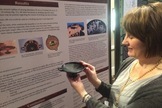 [image error]
[image error]
 Heather Sharpe and her 3D-printed kylix.
Heather Sharpe and her 3D-printed kylix.
Credit: Megan Gannon/Live ScienceView full size imageThe team made mock-up kottabos targets to play both variations of the game. For their andron, Sharpe and her colleagues used one of the art department's drawing rooms (which had a linoleum floor for easy cleanup), and they grabbed a couple padded benches to serve as their couches. Instead of wine, they used watered-down grape juice.
To achieve the best results in kottabos, the participants had to loop a finger through one handle of the kylix and toss the juice overhand, as if they were pitching a baseball. Sharpe said that playing the game proved to be challenging, but she was amazed that some of her students started to hit the target within 10 to 15 minutes.
"It took a fair amount of control to actually direct the wine dregs, and interestingly enough, some of the women were the first to get it," Sharpe told Live Science. "In some respects, they relied a little bit more on finesse, whereas some of the guys were trying to throw it too hard."
Elite Greek women wouldn't have taken part in symposia, but there are some indications that the courtesans, called hetairai, would have played kottabos with the men.
"Another thing we quickly realized is, it must have gotten pretty messy," Sharpe said. "By the end of our experiment we had diluted grape juice all over the floor. In a typical symposium setting, in an andron, you would have had couches arranged on almost all four sides of the room, and if you missed the target, you were likely to splatter your fellow symposiast across the way. You'd imagine that, by the end of the symposium, you'd be drenched in wine, and your fellow symposiasts would be drenched in wine, too."
Sharpe would eventually like to attempt to play kottabos with real wine, to fully understand how the game would devolve as the participants got tipsy.
"It would be fun to actually experiment with wine drinking," Sharpe said. "Of course, this was a university event, so we couldn't exactly do it on campus. But really, to get the full experiment, it would be interesting to try it after having a kylix of wine, or after having two kylixes of wine."
Live Science

 A man plays kottabos in the artwork on this terracotta kylix, housed at the Metropolitan Museum of Art. The cup is attributed to the Kleophrades Painter and dates back to about 500 B.C.
A man plays kottabos in the artwork on this terracotta kylix, housed at the Metropolitan Museum of Art. The cup is attributed to the Kleophrades Painter and dates back to about 500 B.C.Credit: Creative Commons, Marie-Lan Nguyen (2011)
NEW ORLEANS — More than 2,000 years before the invention of beer pong, the ancient Greeks had a game called kottabos to pass the time at their drinking parties.
At Greek symposia, elite men, young and old, reclined on cushioned couches that lined the walls of the andron, the men's quarters of a household. They had lively conversations and recited poetry. They were entertained by dancers, flute girls and courtesans. They got drunk on wine, and in the name of competition, they hurled their dregs at a target in the center of the room to win prizes like eggs, pastries and sexual favors. Slaves cleaned up the mess.
"Trying to describe this ancient Greek drinking game, kottabos, to my students was always a little bit difficult because we do have these illustrations of it, but they only show one part of the game — where individuals are about to flick some dregs at a target," said Heather Sharpe, an assistant professor of art history at West Chester University of Pennsylvania. [11 Interesting Facts About Hangovers]
"I thought it would be really great if we could actually try to do it ourselves," said Sharpe.
So, with a 3D-printed drinking cup, some diluted grape juice and a handful of willing students, Sharpe did just that. She found out that it wasn't impossible to get the hang of kottabos, but the game did require a skilled overhand toss. She presented her findings this past weekend (Jan. 8 to 11) here at the annual meeting of the Archaeological Institute of America.
Raise your glass
Ancient texts and works of art indicate that there were two ways to play kottabos. In one variation, the goal was to knock down a disc that was carefully balanced atop a tall metal stand in the middle of the room. In the other variation, there was no metal stand; rather, the goal was to sink small dishes floating in a larger bowl of water. In both versions, participants attempted to hit their target with the leftover wine at the bottom of their kylix, the ancient equivalent of a Solo cup.
The red-and-black kylixes had two looped handles and a shallow but wide body — a shape that perhaps was not the most practical for drinking but lent itself to playful decoration.
Big eyes were sometimes painted on the underside on kylixes so that the drinker would look like he was wearing a mask when he took a hefty sip. And the relatively flat, circular inside of the cup, called the tondo, often carried droll or dirty pictures that would be slowly revealed as the wine disappeared. The tondo of one kylix at the Museum of Fine Arts in Boston bears the image of a man wiping his bottom. Another drinking cup at the same museum shows a man penetrating a woman from behind with the caption "Hold still."
Other paintings on kylixes were quite self-referential, with scenes of revelers playing kottabos. Based on those ancient illustrations, Sharpe had assumed that to play the game, you would swirl the dregs in the kylix and flick them at the target, almost as if you were doing a forehand throw with a Frisbee. But her experiment showed that that was not the most winning technique. [Coolest Archaeological Discoveries of 2014]
Re-enacting a symposium
Sharpe collaborated with Andrew Snyder, a ceramics professor at West Chester University. He initially made three replica kylixes out of clay, but Sharpe was worried about breaking them during the game. Snyder had just acquired a 3D printer (a MakerBot Replicator 2), so they made a lighter, more durable, plastic kylix at a slightly smaller scale.
 [image error]
[image error]
 Heather Sharpe and her 3D-printed kylix.
Heather Sharpe and her 3D-printed kylix.Credit: Megan Gannon/Live ScienceView full size imageThe team made mock-up kottabos targets to play both variations of the game. For their andron, Sharpe and her colleagues used one of the art department's drawing rooms (which had a linoleum floor for easy cleanup), and they grabbed a couple padded benches to serve as their couches. Instead of wine, they used watered-down grape juice.
To achieve the best results in kottabos, the participants had to loop a finger through one handle of the kylix and toss the juice overhand, as if they were pitching a baseball. Sharpe said that playing the game proved to be challenging, but she was amazed that some of her students started to hit the target within 10 to 15 minutes.
"It took a fair amount of control to actually direct the wine dregs, and interestingly enough, some of the women were the first to get it," Sharpe told Live Science. "In some respects, they relied a little bit more on finesse, whereas some of the guys were trying to throw it too hard."
Elite Greek women wouldn't have taken part in symposia, but there are some indications that the courtesans, called hetairai, would have played kottabos with the men.
"Another thing we quickly realized is, it must have gotten pretty messy," Sharpe said. "By the end of our experiment we had diluted grape juice all over the floor. In a typical symposium setting, in an andron, you would have had couches arranged on almost all four sides of the room, and if you missed the target, you were likely to splatter your fellow symposiast across the way. You'd imagine that, by the end of the symposium, you'd be drenched in wine, and your fellow symposiasts would be drenched in wine, too."
Sharpe would eventually like to attempt to play kottabos with real wine, to fully understand how the game would devolve as the participants got tipsy.
"It would be fun to actually experiment with wine drinking," Sharpe said. "Of course, this was a university event, so we couldn't exactly do it on campus. But really, to get the full experiment, it would be interesting to try it after having a kylix of wine, or after having two kylixes of wine."
Published on January 14, 2015 12:37
History Trivia - Henry III of England marries Eleonora of Provence
January 14,

1131 King Valdemar I of Denmark was born. In addition to winning independence from the Holy Roman Empire, he also gained the approval of the church for the dynastic rule of his family, the Valdemars.
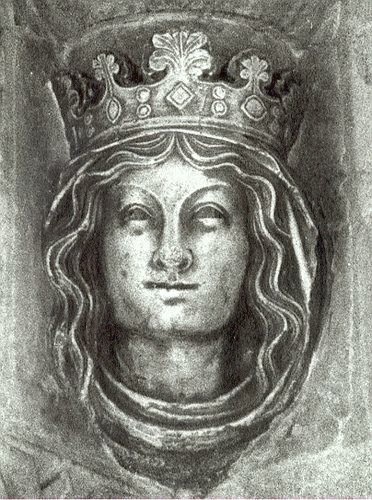
1236 Henry III of England married Eleonora of Provence.

1501 Martin Luther (age 17) entered the University of Erfurt (founded in 1379, it was the first university in modern day Germany, and for some time was the largest university in the country).


1131 King Valdemar I of Denmark was born. In addition to winning independence from the Holy Roman Empire, he also gained the approval of the church for the dynastic rule of his family, the Valdemars.

1236 Henry III of England married Eleonora of Provence.

1501 Martin Luther (age 17) entered the University of Erfurt (founded in 1379, it was the first university in modern day Germany, and for some time was the largest university in the country).

Published on January 14, 2015 03:00
January 13, 2015
History Trivia - stage play Eastward Hoe offends King James I
January 13

1128 Knights Templar (warrior monks) received the rules of their order, which was to police the Pilgrimage route to the Holy Land and provide services to the patriarch of Jerusalem.
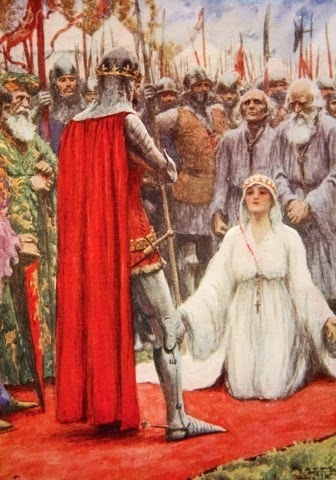
1328 Edward III of England married Philippa of Hainault (northern France).

1547 Henry Howard, Earl of Surrey was sentenced to death. He was imprisoned with his father by Henry VIII and executed for treason on January 19.
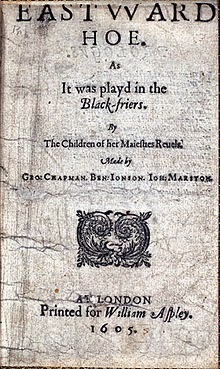
1605 The controversial Jacobean era stage play Eastward Hoe by Ben Jonson, George Chapman, and John Marston was performed. The satire offended King James I with its anti-Scottish comedy, which caused Jonson and Chapman to be arrested for a time, which made their play one of the famous dramatic scandals of its era.

1607 The Bank of Genoa failed after the announcement of a national bankruptcy in Spain.


1128 Knights Templar (warrior monks) received the rules of their order, which was to police the Pilgrimage route to the Holy Land and provide services to the patriarch of Jerusalem.

1328 Edward III of England married Philippa of Hainault (northern France).

1547 Henry Howard, Earl of Surrey was sentenced to death. He was imprisoned with his father by Henry VIII and executed for treason on January 19.

1605 The controversial Jacobean era stage play Eastward Hoe by Ben Jonson, George Chapman, and John Marston was performed. The satire offended King James I with its anti-Scottish comedy, which caused Jonson and Chapman to be arrested for a time, which made their play one of the famous dramatic scandals of its era.

1607 The Bank of Genoa failed after the announcement of a national bankruptcy in Spain.

Published on January 13, 2015 03:00
January 12, 2015
Book Launch - Scribbler Tales (Volume Three) - print and electronic editions now available

“Scribbler Tales is a unique mix of genres in one anthology rich with tension, humanity and genuine emotion. Unconventional settings and unexpected twists are bound to leave you pondering long after you close this book.”
When a highly classified schematic of a prototype engine is stolen, the evidence points to an inside job in Hidden Lies. In Nightmare, Melanie’s childhood demons carryover into adulthood when she returns to her ancestral home. Detective Newport races against time to apprehend a killer targeting prosecuting attorneys in Payback. The Night Stalker is not a figment of Pamela’s imagination as she tries to convince the police that her life is in danger. While trying to identify a serial arsonist, a Fire Marshall suspects a highly decorated firefighter in Turning Point.
Purchase:
Amazon US
Amazon UK
Published on January 12, 2015 13:08
History Trivia - Treaty of Toledo signed
January 12

475 Basiliscus became Byzantine Emperor, with a coronation ceremony in the Hebdomon palace in Constantinople.
532 the
 second Cathedral of Santa Sophia in Constantinople was destroyed by fire in the Nika insurrection
second Cathedral of Santa Sophia in Constantinople was destroyed by fire in the Nika insurrection
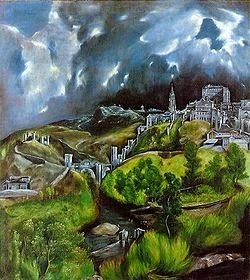
1539 the Treaty of Toledo was signed by King Francis I of France and Holy Roman Emperor Charles V whereby both parties agreed to make no further alliances with England. The treaty came after Henry VIII of England split with Rome and Pope Paul III.


475 Basiliscus became Byzantine Emperor, with a coronation ceremony in the Hebdomon palace in Constantinople.
532 the
 second Cathedral of Santa Sophia in Constantinople was destroyed by fire in the Nika insurrection
second Cathedral of Santa Sophia in Constantinople was destroyed by fire in the Nika insurrection
1539 the Treaty of Toledo was signed by King Francis I of France and Holy Roman Emperor Charles V whereby both parties agreed to make no further alliances with England. The treaty came after Henry VIII of England split with Rome and Pope Paul III.

Published on January 12, 2015 03:00
January 11, 2015
History Trivia - first official lottery held in England
January 11

802 St. Paulinus of Aquileia died. He was royal master of grammar to Charlemagne at the Palace School and was appointed Patriarch of Aquileia (Italy) in 787 after Charlemagne conquered the duchy.

1569 The first official lottery was held in England, with 10 shilling lots sold at old St Paul's Cathedral.

1558 Westmunster Church in Middelburg (The Netherlands) was destroyed by a heavy storm.

1571 the Austrian nobility were granted freedom of religion.

1693 Mt. Etna erupted in Sicily. The powerful earthquake destroyed parts of Sicily and Malta.


802 St. Paulinus of Aquileia died. He was royal master of grammar to Charlemagne at the Palace School and was appointed Patriarch of Aquileia (Italy) in 787 after Charlemagne conquered the duchy.

1569 The first official lottery was held in England, with 10 shilling lots sold at old St Paul's Cathedral.

1558 Westmunster Church in Middelburg (The Netherlands) was destroyed by a heavy storm.

1571 the Austrian nobility were granted freedom of religion.

1693 Mt. Etna erupted in Sicily. The powerful earthquake destroyed parts of Sicily and Malta.

Published on January 11, 2015 03:00
January 10, 2015
Meet author K. Meador at Kendall's Restaurant - Noble, OK - January 15, 2015
 Come join author K-Trina Meador at Kendall's Restaurant in Noble Oklahoma. They feature the HUGE chicken fried steak and to-die-for cinnamon rolls! When:Thursday, January 15at 6:00pm - 8:00pm Where:Kendall"s Restaurant100 S Main, Noble, Oklahoma About:K-Trina Meador is an aircraft mechanic as well as an author. She earned her airframe and powerplant license in December, 1992. K-Trina has travelled to many states working as an aircraft mechanic. In addition to aviation, K-Trina's interests expands to hiking, snorkeling, photography, and traveling. For more information about K-Trina and her novels, kindly visit K-Trina's web page
Come join author K-Trina Meador at Kendall's Restaurant in Noble Oklahoma. They feature the HUGE chicken fried steak and to-die-for cinnamon rolls! When:Thursday, January 15at 6:00pm - 8:00pm Where:Kendall"s Restaurant100 S Main, Noble, Oklahoma About:K-Trina Meador is an aircraft mechanic as well as an author. She earned her airframe and powerplant license in December, 1992. K-Trina has travelled to many states working as an aircraft mechanic. In addition to aviation, K-Trina's interests expands to hiking, snorkeling, photography, and traveling. For more information about K-Trina and her novels, kindly visit K-Trina's web page
Published on January 10, 2015 11:55
Mummy Poo Solves 700-Year-Old Murder Mystery
 by Rossella Lorenzi
by Rossella LorenziDiscovery News
Analysis of fecal matter from the natural mummy of Cangrande della Scala, a medieval warlord and the patron of the poet Dante Alighieri, has established the Italian nobleman was poisoned with a deadly heart-stopping plant known as Digitalis or foxglove.
The most powerful man in the history of Verona, to whom Dante dedicated part of the “Divine Comedy,” Cangrande della Scala (1291-1329) died at the age of 38 on 22 July 1329.
“He became sick with vomit and diarrhoea just a few days after winning control over the city of Treviso,” Gino Fornaciari, professor of history of medicine and paleopathology at the University of Pisa, told Discovery News.
Medieval Poison Ring Used for Political Murders
The Treviso victory was the last act in Cangrande’s long struggle to control the entire region of Veneto in northern Italy.
According to contemporary accounts, he had contracted the disease a few days before by “drinking from a polluted spring.”
Rumors of poisoning immediately started to spread. In 2004, 675 years after Cangrande’s death, Fornaciari’s team exhumed the nobleman’s body from a richly decorated marble tomb in the church of Santa Maria Antica in Verona.
“The natural mummy, still wearing its precious clothes, appeared in good state of preservation,” Fornaciari and colleagues wrote in the Journal of Archaeological Science.
Lying on the back with the arms folded across the chest, the 5-foot, 7-inch mummy was initially studied using digital X-ray and CT scans.
These showed regurgitated food in the throat, signs of arthritis in the elbows and hips, evidence of tuberculosis and possible cirrhosis.
The abdominal CT scans also showed the presence of feces in the rectum, allowing Fornaciari and colleagues to extract a sample.
Cleopatra killed by drug cocktail?
Analyses of the feces showed the presence of pollen grains of chamomile, black mulberry and, “totally unexpected, of foxglove (Digitalis sp. perhaps purpurea),” the researchers said.
Toxicological analyses confirmed concentrations of digoxin and digitoxin, two Digitalis glycosides, both in the liver and in the faeces.
“Although it is not possible to rule out totally an accidental intoxication, the most likely hypothesis is that of a deliberate administration of a lethal amount of Digitalis,” Fornaciari and colleagues concluded.
Indeed, the gastrointestinal symptoms showed by Cangrande in the last hours of his life and described by historical sources are compatible with the early phase of Digitalis intoxication.
According to the researchers, the foxglove poison may have been masked in a decoction containing chamomile, largely used as a sedative and antispasmodic drug, and black mulberry, used as astringent, which was prepared for some indisposition of Cangrande.
‘Sardonic Grin’ Has Roots in Poisonous Herb
Following Cangrande’s death, one of his physicians was hanged by his successor and nephew Mastino II.
“This adds more weight to the possibility that foul play was at least suspected, although who was ultimately behind the killing is likely to remain a mystery,” Fornaciari said.
Cangrande certainly had enemies. Among the principal suspects are the neighboring states, the Republic of Venice or Ducate of Milan, worried about the growing power of Cangrande.
But the murderer could have also been someone closer to Cangrande.
“It could have well been Mastino II himself,” Fornaciari said.
Image: Stone lid of the sarcophagus with Cangrande’s portrait (A); the body at the moment of opening (B), still wrapped in his precious clothes (C) and at the beginning of the autopsy (D). Credit: Gino Fornaciari/University of Pisa
Published on January 10, 2015 08:20
History Trivia - King Charles I flees London
January 10
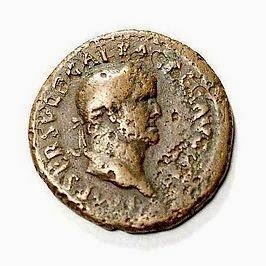
69 Lucius Calpurnius Piso Licinianus was appointed by Galba to deputy Roman Emperor.

236 Pope Fabian succeeded Anterus as the twentieth pope of Rome.

1642 King Charles I and his family fled London for Oxford.
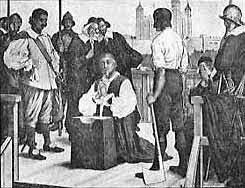
1645 Archbishop William Laud was beheaded at the Tower of London because he opposed the radical forms of Puritanism and supported King Charles I during the British civil war.


69 Lucius Calpurnius Piso Licinianus was appointed by Galba to deputy Roman Emperor.

236 Pope Fabian succeeded Anterus as the twentieth pope of Rome.

1642 King Charles I and his family fled London for Oxford.

1645 Archbishop William Laud was beheaded at the Tower of London because he opposed the radical forms of Puritanism and supported King Charles I during the British civil war.

Published on January 10, 2015 03:00



